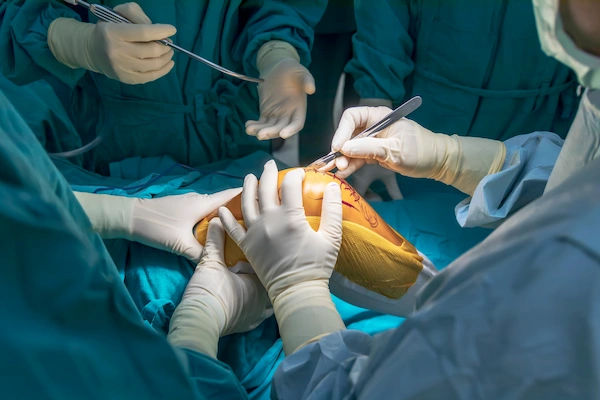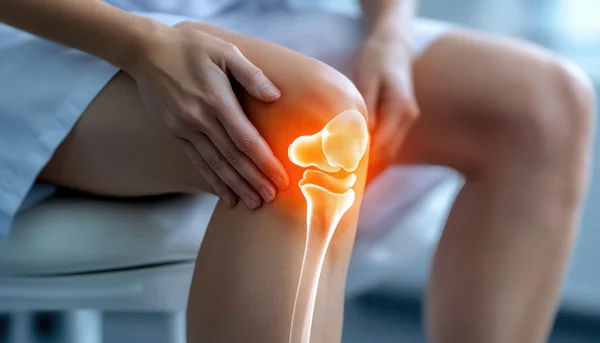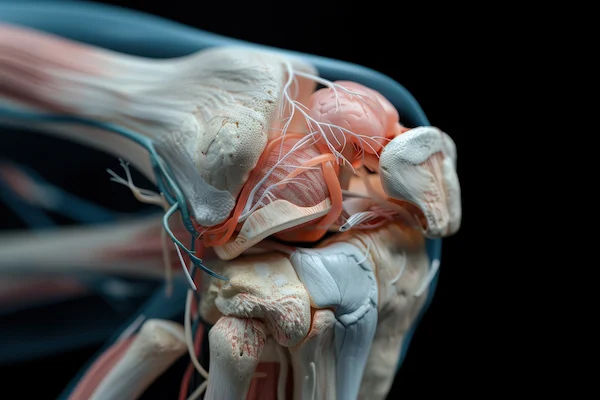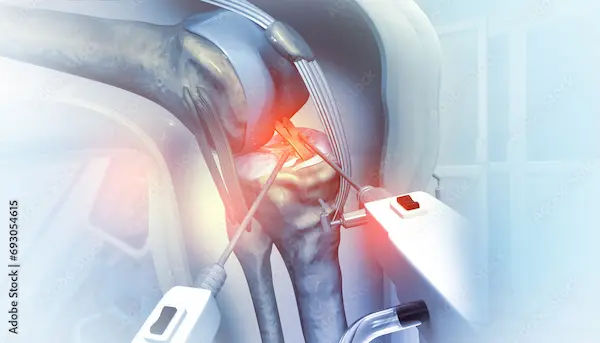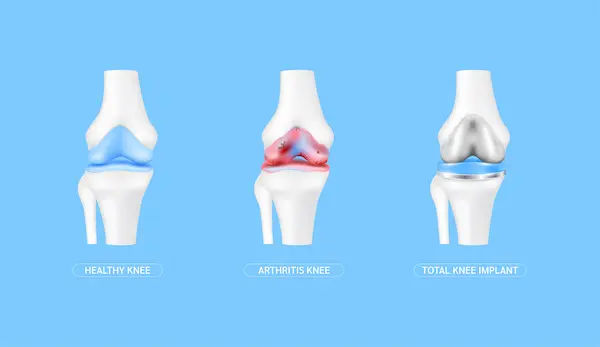Your Complete Guide to Knee Replacement Recovery; Timeline, Tips & Expectations
Discover the full recovery journey after knee replacement surgery, including timeline, tips for pain management, physiotherapy, and realistic expectations for the best outcome.


Introduction
Undergoing knee replacement surgery is a significant step toward reclaiming a life free from chronic pain and stiffness. While the procedure itself is a well-established success, the journey that follows—the recovery process—is equally crucial. A successful recovery doesn't just happen; it's built on a foundation of knowledge, dedication, and patience. This comprehensive guide is designed to walk you through every stage of your knee replacement recovery, from the moment you wake up in the hospital to the day you return to your favourite activities. We will demystify the timeline, provide actionable tips for pain management and physiotherapy, and set realistic expectations to empower you as an active participant in your own healing. Whether you're preparing for surgery or are already in the early days of rehab, understanding what to expect during your knee replacement recovery can significantly reduce anxiety and set you on the fastest path to a full and successful outcome. Let's dive in.
The First 24-72 Hours: Your Hospital Stay
The immediate post-operative period is focused on managing initial discomfort, preventing complications, and initiating movement. You will be closely monitored by a medical team during this time.
Managing Post-Surgery Pain Effectively
Pain is expected after a major surgery like a knee replacement, but it is highly manageable. Your medical team will use a multi-modal approach, which may include a combination of nerve blocks, IV pain medications, and oral pills. The goal is not to eliminate all sensation but to control pain enough to allow you to participate in crucial early physiotherapy. It's important to communicate your pain levels openly with your nurses. Don't "tough it out"—effective pain management after knee replacement is key to starting your rehab strong. Newer protocols often emphasise non-opioid options where possible to minimise side effects.
The Role of Physical Therapy from Day One
It may seem surprising, but physiotherapy often begins just hours after your surgery. A therapist will help you get out of bed and guide you through simple exercises. These initial movements are vital for rehabilitation and focus on ankle pumps (to boost circulation), quad sets (gently tightening your thigh muscle), and glute sets. You will also start walking short distances with a walker and assistance. This early activity is the best way to prevent stiffness and kickstart the healing process.
Preventing Blood Clots: A Critical Priority
After surgery, the risk of developing deep vein thrombosis (DVT), or blood clots, increases. Your care team will take this risk seriously. Preventive measures include blood thinners (anticoagulants) as medication, compression stockings to improve blood flow in your legs, and the ankle pump exercises mentioned above. The early walking you do is also a powerful clot-prevention tool. Be sure to report any unusual calf pain, warmth, redness, or significant swelling to your nurse immediately.
Weeks 1-6: The Early Recovery Phase at Home
This phase is often the most challenging, as you transition to managing your recovery independently at home. Consistency is key.
Consult an Orthopaedic doctor for the best advice
Setting Up Your Home for Success
Before you leave the hospital, ensure your home is a safe and efficient recovery space. This is a critical step for a smooth knee replacement recovery.
- Create a "Recovery Central": Have a sturdy chair with a firm seat and arms, a footstool, and a table within easy reach for your phone, water, medications, and remote controls.
- Clear Pathways: Remove tripping hazards like loose rugs and electrical cords.
- Bathroom Safety: Install a raised toilet seat and a shower chair. Use non-slip mats in the bath/shower.
Your Daily Exercise Regimen and Mobility Aids
Your physiotherapy protocol for knee replacement will become a daily routine. You'll have a set of exercises to perform several times a day, focusing on restoring your range of motion (ROM) and beginning quadriceps strengthening. You will primarily use a walker initially, transitioning to a cane as your strength and balance improve. Adherence to your exercise plan is the single biggest factor influencing your recovery speed. Consistency, not intensity, is what matters most at this stage.
Wound Care and Recognising Signs of Infection
Proper incision care is simple but essential. Keep the area clean and dry as per your surgeon's instructions. Watch for warning signs of infection, including:
- Increased redness, warmth, or swelling around the incision.
- Pus or foul-smelling drainage.
- Fever above 100.4°F (38°C).
- Escalating pain.
If you experience any of these signs of infection after knee surgery, contact your surgeon promptly. If you need a quick consultation, you can consult a surgeon online with Apollo24|7 for an initial evaluation.
Weeks 6-12: Gaining Strength and Independence
This is when you'll see significant progress. Swelling and pain continue to decrease, and your confidence with mobility grows.
Progressing Your Physical Therapy Exercises
Therapy sessions will become more challenging. You'll work on building endurance, improving balance, and walking with a more normal gait. The best exercises after knee surgery at this stage often include stationary cycling (excellent for ROM), leg presses, and step-ups. Your therapist will also focus on any lingering stiffness, working to achieve full knee extension and flexion.
Reducing Reliance on Walking Aids
Most people transition from a walker to a cane around weeks 4-6, and often discontinue the cane entirely between weeks 6 and 12. This decision should be guided by your physiotherapist and surgeon, based on your strength, balance, and absence of a limp. The goal is to walk independently without a compensatory gait.
Managing Swelling and Discomfort as Activity Increases
As you become more active, some swelling is normal. The key to how to reduce swelling after knee replacement remains the same: elevate your leg and use ice packs consistently, especially after therapy sessions. It's common to experience new aches as you use muscles that have been inactive; this is different from surgical pain and is a sign of strengthening.
3 Months and Beyond: Long-Term Recovery and Maximising Results
Recovery is a marathon, not a sprint. Full recovery can take 6 to 12 months, with continued improvement for up to two years.
Returning to Normal Activities and Low-Impact Sports
By three months, many people have returned to most daily activities, including driving after knee replacement (if it was your left knee and you drive an automatic, it may be sooner). You can typically enjoy low-impact sports like swimming, cycling, golf, and brisk walking. High-impact activities like running and jumping are generally not recommended as they can accelerate wear on the implant.
The Importance of Continued Strength Training
Your new knee is only as good as the muscles that support it. Making strength training for your legs, particularly the quadriceps and hamstrings, a permanent part of your routine is the best way to ensure the long-term success of your total knee arthroplasty. Strong muscles act as shock absorbers and stabilise the joint.
Setting Realistic Long-Term Expectations
A successful knee replacement should relieve pain and allow you to function normally. However, it may not feel completely "natural." Some people report a sensation of numbness around the incision or mild clicking in the knee. These are usually normal. Understanding these long-term restrictions after knee arthroplasty and sensations helps maintain satisfaction with the outcome.
Beyond the Physical: The Psychological Journey of Recovery
The emotional rollercoaster of recovery is rarely discussed but is very real. Frustration, impatience, and even temporary feelings of regret can occur, especially during the difficult early weeks. It's important to celebrate small victories—walking to the postbox without a cane, sleeping through the night, or bending your knee a few more degrees. Stay connected with friends and family, and don't hesitate to discuss these feelings with your doctor or a counsellor. A positive mindset is a powerful healing tool.
Conclusion
The path to full recovery after a knee replacement is a journey of dedication, but one with a profoundly rewarding destination: a life with significantly less pain and greater mobility. By understanding the timeline—from the critical first days in the hospital to the strengthening months that follow—you can approach each phase with confidence and realistic expectations. Remember that your active participation in physiotherapy, pain management, and self-care is what will ultimately determine your success. While challenges will arise, each week will bring new improvements and milestones. If at any point you have concerns about your progress, such as persistent pain or signs of infection, always seek professional guidance. For ongoing support and convenient consultations, you can connect with specialists through Apollo24|7. Your new knee is a gift; by following this guide, you can ensure it serves you well for many active years to come.
Consult an Orthopaedic doctor for the best advice
Consult an Orthopaedic doctor for the best advice

Dr. Anil Pradeep Jadhav
Orthopaedician
23 Years • MBBS MS (Ortho)
Nashik
Apollo Hospitals Nashik, Nashik
(25+ Patients)
Dr. Vamsi Krishna Reddy
Orthopaedician
6 Years • MBBS, M.S.Orthopaedics
Guntur
Sri Krishna Orthopedic And Dental Hospital, Guntur
Dr. Anil Sharma
Orthopaedician
42 Years • MBBS, MS Orthopedics
New Delhi
AAKASH MEDSQUARE, New Delhi

Dr. Manoj Dinkar
Orthopaedician
15 Years • MBBS, Dip (Orthopaedics)
New Delhi
THE DOCTORS NESST, New Delhi

Dr. Pradeep Lucas
Orthopaedician
7 Years • MBBS, Diploma in Orthopaedics, Fellowship in DFSI
Bengaluru
Revival Multispeciality Clinic, Bengaluru
Consult an Orthopaedic doctor for the best advice

Dr. Anil Pradeep Jadhav
Orthopaedician
23 Years • MBBS MS (Ortho)
Nashik
Apollo Hospitals Nashik, Nashik
(25+ Patients)
Dr. Vamsi Krishna Reddy
Orthopaedician
6 Years • MBBS, M.S.Orthopaedics
Guntur
Sri Krishna Orthopedic And Dental Hospital, Guntur
Dr. Anil Sharma
Orthopaedician
42 Years • MBBS, MS Orthopedics
New Delhi
AAKASH MEDSQUARE, New Delhi

Dr. Manoj Dinkar
Orthopaedician
15 Years • MBBS, Dip (Orthopaedics)
New Delhi
THE DOCTORS NESST, New Delhi

Dr. Pradeep Lucas
Orthopaedician
7 Years • MBBS, Diploma in Orthopaedics, Fellowship in DFSI
Bengaluru
Revival Multispeciality Clinic, Bengaluru
More articles from Total Knee Replacement
Frequently Asked Questions
How long does knee replacement recovery typically take?
Most people resume normal daily activities within 6 weeks and feel significantly better by 3 months. However, full recovery, with the dissipation of minor swelling and maximal strength gains, can take 6 to 12 months or longer.
What is the most painful part of knee replacement recovery?
The first few days after surgery are generally the most challenging in terms of pain. However, with modern pain management techniques, this is well-controlled. The first 2-3 weeks of intensive physiotherapy can also be uncomfortable as you work to regain range of motion.
When can I stop using a walker or cane?
This varies, but a typical timeline is: a walker for 2-4 weeks, followed by a cane for another 2-4 weeks. Your physiotherapist will advise you based on your strength, balance, and ability to walk without a limp.
What are the best sleeping positions after knee replacement?
Sleeping on your back with your operated leg elevated on pillows is often most comfortable. You can also sleep on your non-operative side with a pillow between your knees to keep your new knee aligned and prevent rolling over.
Are there any permanent restrictions after a knee replacement?
Most surgeons advise avoiding high-impact activities like running and jogging to protect the implant from excessive wear. Low-impact activities such as walking, swimming, cycling, and golf are highly encouraged for long-term health.
